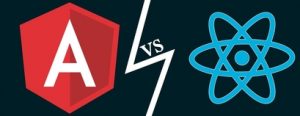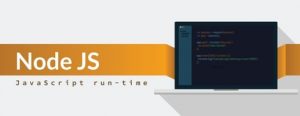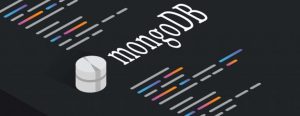
If you’ve ever played an online game or used an online app, the odds are good that you’ve encountered a product built with Node.js.
Node.js is a popular and widely used platform for developing web applications, chat rooms, data streaming apps, online games and other data-intensive applications. Node.js is designed to help developers build scalable applications quickly and easily. Because it allows for compiling JavaScript into native machine code, applications built with Node.js are often highly efficient.
If you dream about becoming an application developer, game-builder or full stack programmer, the Node.js framework should be at the very top of your to-learn list.
Not sure where to start? No problem — this article will cover the basics of Node.js for beginners, including the essentials of the framework, careers that make use of Node.js and ancillary skills that could bolster your coding repertoire.
What Is Node.js?
Node.js is an open-source, cross-platform, dynamic JavaScript runtime environment. As a runtime environment, Node.js has the software and hardware infrastructure necessary to execute a program in real-time. This functionality makes it an invaluable tool for those who want to write back end (server-side) programs in JavaScript.
The framework itself was developed in 2009 and was based on Google Chrome’s JavaScript engine. Today, it allows JavaScript coders to adopt a full stack mentality and embrace front and back end challenges alike. This is a bigger deal than you might think — before Node.js came onto the market, JavaScript could only function within the web browser.
The language was — and continues to be — an invaluable web-building tool. Along with HTML and CSS, it stands as one of the three core web development technologies and empowers programmers to create dynamic websites. However, without a suitable runtime environment, JavaScript’s uses were limited mainly to front end work.
But with Node.js, those limitations disappeared. Today, the framework allows JavaScript developers to create standalone applications and software.
Because Node.js uses an event-driven, non-blocking input-output (I/O) model, it is lightweight and efficient. The framework also allows the server to handle multiple requests simultaneously.
As an open-source server environment, Node.js is free, non-proprietary technology. It can run on a wide array of platforms and operating systems, including Linux, Windows and macOS. In short, Node.js extends JavaScript’s capabilities into server-side development.
Why learn Node.js?
In a word — it’s useful.
Node.js has countless practical applications in software, application and web development. It can create dynamic page content, I/O bound applications, data-intensive real-time applications and JSON APIs. Developers can use Node.js to write more expansive applications without writing overly complicated code. An array of leading employers in the tech and related industries use the framework, including PayPal, Google, Microsoft, General Electric and Uber.
Companies turn to Node.js because they develop fast, interactive applications. As such, they need professionals who can handle the framework. Their need is a developer’s gain; knowing Node.js can give an aspiring coder an edge during their job search.
Skills covered in these tutorials:
- Restful API
- Events & Arguments
- Middleware
- Template Engines
- Express Applications
- Postman Endpoints
Node.js Basics
It’s easy to feel intimidated by Node.js as a new coder, especially if your experience has mostly revolved around front end (client-side) programming. You might feel comfortable designing a website with HTML, CSS and JavaScript — but using your JavaScript savvy to build an application in Node.js? That’s an entirely new challenge.
But don’t worry; in the below sections, we’ll walk you through a few Node.js tutorials and help you familiarize yourself with the framework’s basics.
What You Need to Know Before Starting
Given that Node.js is built around JavaScript programming, you’ll need to have at least a foundational understanding of JavaScript’s basic syntax and conventions before you attempt to learn Node.js.
At the very least, you should have a grasp of key coding concepts such as data types, loops, functions, arrays and bug fixing. These are universally important in all programming areas and will need to be on your to-learn list even if you plan on pivoting to another back end coding language or framework. You may also want to study up on a few JavaScript-specific programming concepts such as callbacks, promises, variable declarations, object literals, timers, the event loop and functional programming.
As you can probably guess, Node.js isn’t a framework often recommended to complete beginners. While those who have a solid programming foundation might be able to pick up Node.js skills via practice and self-study, beginning coders may benefit from a more formalized educational experience.
Take a coding bootcamp as an example; in these intensive programs, beginning coders pick up front and back end coding fundamentals in as little as three to six months. Learners also have a chance to gain proficiency in standard coding tools and frameworks like — you guessed it! — Node.js.
Don’t rush into Node.js before you’re ready! Take the time you need to learn your coding basics before you dive into the framework.
Node.js Process Model
If you’re a Node.js beginner, you’ll need to familiarize yourself with the framework’s process model.
The way Node.js handles user requests to the web server is different from the approach outlined in the conventional web-server model.
Traditionally, each request made to a web server is handled by one dedicated “thread” within the server’s finite “thread pool.” If no threads are available at the time a request is made, that request waits in a queue and executes as soon as one becomes available. This approach is conventional but resource-intensive.
Node.js offers a different model for processing user requests on the server. All user requests are handled by a single thread, asynchronously. The framework uses an internal C++-based thread pool to provide this asynchronous input-output. Node.js’s event loop conducts a constant check for completed events, executing the function when each job completes. This approach produces faster results and increased application performance.
Moreover, because Node.js runs in a single process, it needs fewer resources than other server platforms. It may not be the best-suited framework for CPU-heavy applications like image processing due to the length of time required to process each request, but it’s an excellent, efficient choice for many web applications.
Benefits of Node.js
The advantages Node.js provides to front and back end coders alike are well-established.
Scalability
Node.js lends itself to scaling. Programmers can rapidly scale up any program by adding extra resources or nodes to the system. This capability is one that many other JavaScript server-side technologies lack and is thus invaluable for anyone who wants to build large-scale applications with the language.
Accessibility and Versatility
Node.js is accessible and provides valuable flexibility to full stack development. Today, JavaScript is one of the most commonly used programming languages in the industry. It’s beloved among developers for its usability and intuitive syntax. By itself, the language is only useful in front end development. However, with Node.js, developers can use JavaScript to code server-side applications, too. The framework also interacts well with database tools such as MySQL and MongoDB.
Node.js is also a crucial part of the MERN stack, which encompasses MongoDB, Express.js, React.js and Node.js. A developer who uses the MERN stack can build a full, three-tier architecture (front end, back end, database) with JavaScript and JSON alone. Node.js also stands as part of the MEAN stack (MongoDB, Express.js, Angular.js, Node.js).
Here’s a quick breakdown of what these technologies are:
- MongoDB — a cross-platform, NoSQL database program.
- Express.js — a back end web application framework designed for Node.js.
- React.js — an open-source, front end JavaScript library for designing web interfaces.
- Angular.js — an alternative front end framework for JavaScript development.
- Node.js — a top-tier JavaScript web server and framework.
With both MERN and MEAN stacks, coders use JavaScript to build their sites from the ground up. The only difference between the two stacks is the choice of front end frameworks (React.js vs. Angular.js). The stack you choose is entirely up to your preference — either stack will provide you with a seamless JavaScript coding experience.
High Performance
Node.js is well-known for its optimal performance, rapid execution and top-notch user experience. Moreover, because the framework is open-source and has an active developer community, it is continually improving. Node.js’s open-source nature ensures that developers always have access to the packages, libraries and support tools they need to build and maintain successful programs.
Setting Up Development Environment for Node.js (Tools and Steps)
If you’re planning to enroll in a Node.js course or follow a Node.js tutorial, you’ll need a development environment that will allow you to test your code. You can set up a conducive environment on Windows, macOS, Linux and other popular operating systems.
The official Node.js website allows you to download the open-source package appropriate for your operating system. The Node.js download will come with npm, the Node package manager. You’ll then create a file called package.json to hold all of your metadata. The Node package manager also comes with several relevant clients, including Redis.js, which provides in-memory data storage structures.
After you install Node.js and your npm, you’ll need a place to write your code. You can use a simple text editor or an integrated development environment (IDE). While IDE software is more complex and takes more time to prepare, it can provide helpful tools. That said, some coders enjoy the simplicity of straightforward text editing. Try both out for yourself; you may find that you prefer to use each for different tasks!
Modules
Node.js features several built-in modules — reusable blocks of code or sets of functions that developers can include when writing their applications. By using the require function in Node.js, you can load some of these bundled and independent modules into your program. This function can also load third-party libraries and developer-produced content. As you develop your Node.js skills, you will be able to create your own modules.
Careers and Industries That Implement Node.js Skills
Given Node.js’s utility as a back end JavaScript engine, it’s not all that surprising that many tech companies use it to make their applications faster and more efficient. Major companies like Walmart, Netflix, LinkedIn and eBay all use Node.js for their server-side programming.
If you plan to upskill into back end or full stack coding, you should make sure that learning Node.js is at the very top of your academic priority list. Not only is the framework an invaluable coding tool in its own right, but having it on your resume may give you an edge when you apply for your first professional coding role.
Below, we’ve listed a few jobs that require — or at least strongly recommend — Node.js proficiency.
Node.js Developer
Node.js developers are full stack coders who build and maintain network applications. Their primary responsibilities include managing data flow between users and servers, developing back end structures and ensuring that their applications connect with web-based services. Node.js developers typically work in teams and often collaborate with full stack developers and user interface (UI) designers.
JavaScript Developer
Given that JavaScript is primarily a front end coding language, these professionals typically use it to define the front end logic that shapes website design. However, JavaScript developers aren’t limited to client-side projects. If they know how to use Node.js, they can also provide support on back end initiatives. These professionals can work alone, although they most often work collectively with other developers.
UI Designer
A user interface (UI) designer is responsible for designing a clean, usable and brand-consistent interface for users. They review every page and function that a visitor could encounter. Because these professionals deal with front end structures, they need to have basic web development skills such as HTML, CSS, JavaScript and Node.js. Node.js’s data collection and management structures can be beneficial for a UI designer given that the role often requires professionals to conduct data analysis.
Marketer
A marketer’s primary goal is to sell products and reach target consumers. As such, they need to have at least a basic understanding of the websites that engage potential customers. Marketers who know basic front end tools are better equipped to conceptualize new web-based advertising designs and engaging web features than their non-technical peers. While these specialists don’t necessarily need the back end capabilities that Node.js provides, knowing how to use the framework can bolster their professional value.
Front End Developer
Front end developers take on the responsibility of designing, building and improving the client sides of websites or digital products. Their core tool set consists of three main languages: JavaScript, HTML and CSS. However, professionals who want to expand their full stack capabilities may want to consider picking Node.js, which will allow them to write back end code in JavaScript. Knowing Node.js can also be useful for front end developers who work alone and don’t have the support that back end-savvy team members would otherwise provide.
Webpage Owner
You don’t need to be a developer to use Node.js. The framework can be enormously useful even if you’re just looking to improve your personal or business website. Understanding Node.js can help you write clean, efficient code that is responsive and dynamic — without paying outside experts and professionals to do the work. That said, if you’re looking to learn basic web development, you want to start by learning HTML, CSS and JavaScript before you dive into Node.js.
How Long Does it Take to Learn Node.js?
It depends on you! Coders who are already well-versed in JavaScript and have a foundational understanding of how back end frameworks work will likely be able to pick up Node.js skills within a few short weeks. However, if you’re new to coding or haven’t yet expanded your full stack skill set, your educational turnaround will most likely be longer.
Your chosen learning method can also influence your timetable. New coders who try to learn Node.js through self-scheduled independent study may take more time than those accountable to more formalized courses. Both academic approaches are valid, though you should consider your goals when selecting your learning route.
For example, those who want to upskill into a professional full stack role quickly may want to consider enrolling in a coding bootcamp. These intensive, instructor-led courses impart job-ready coding skills within just three months (full-time) to six months (part-time). Choose an academic path that suits your goals!
What Other Skills/Languages Should I Learn?
Your academic to-do list will depend on your goals!
If you plan to become a front end developer, you should know your web development basics — i.e., HTML, CSS and JavaScript. Those interested in full stack development may also want to pick up proficiency in back end tools and technologies like Python, Bootstrap, Django and SQL. If you’re interested in working with data, you may also benefit from picking some basic data analytics knowledge.
Not sure where to get started? Berkeley Coding Boot Camp may be your best bet. This intensive, flexible program provides instruction in the full stack skills that aspiring coders need to know before entering the job market. Bootcamps typically run for three to six months, depending on whether you study full- or part-time, and are available both virtually and in-person.
Want to know what Berkeley Coding Boot Camp can do for your career? Contact us today!
Node.js FAQs
What is Node.js used for?
Developers use Node.js to write back end applications in JavaScript. The framework is ideal for full stack developers who work primarily in JavaScript and want a seamless development experience.
Is Node.js easy to learn?
Yes! Because it’s based on JavaScript, Node.js is relatively easy to pick up once you understand the programming language back end development basics. However, if you’re new to coding and need some help with the fundamentals, you may want to consider enrolling in a bootcamp or other formal course.
Do developers need to know Node.js?
It depends on the type of developer you want to be! Front end programmers technically only need HTML, CSS and JavaScript to do their jobs. However, if you want to be a full stack developer or hone your server-side coding skills, you should spend some time learning the framework. Node.js is great for those who are only just starting to expand their back end skills because it relies on one of the most popular front end coding languages — JavaScript!
Navigate Node.js Articles
From basic knowledge to more advanced Node.js coding techniques.
Get Program Info
Ready to learn more about Berkeley Coding Boot Camp in San Francisco? Contact an admissions advisor at (510) 306-1218.
 Live Chat
Live Chat




